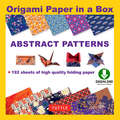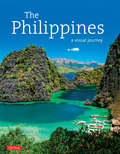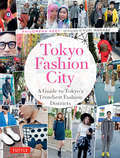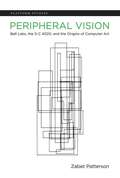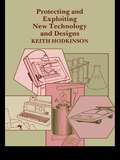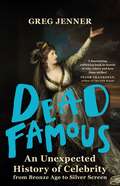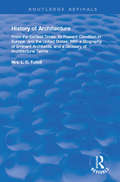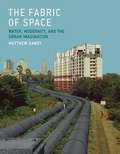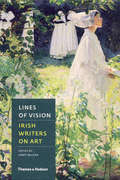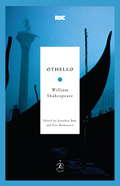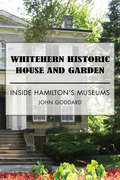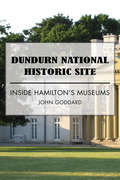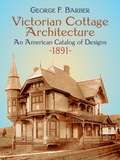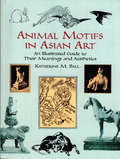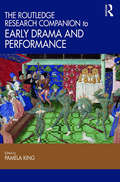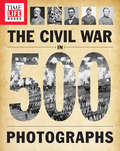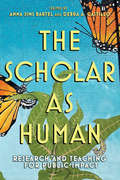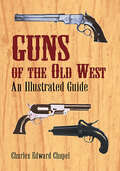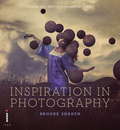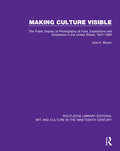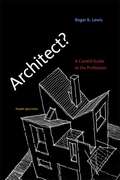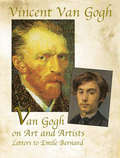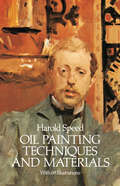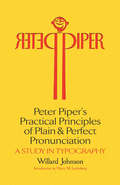- Table View
- List View
Origami Paper in a Box: Abstract Patterns
by Francesco Decio Vanda BattagliaJapanese patterns are elegant, colorful and unique. Origami Paper in a Box takes exciting, abstract patterns and transforms them into origami folding paper. These paper packs make a great resource for all different kinds of folding, crafting and scrapbooking projects. The package includes folding sheets as well as a booklet with instructions so that folders can start right away.
The Philippines: A Visual Journey
by Elizabeth V. ReyesThis beautifully photographed travel pictorial captures the people, art, architecture, food and landscapes of the Philippines.The Philippine Archipelago with its 7,100 islands is culturally diverse and unique in Southeast Asia, and renowned for the splendor of its coastal beaches and terraced mountains. Seventy million Filipinos have been nurtured by both tropical environment and unique historical development-through 300 years of Spanish Chistianization and 40 years of American modernization-and have emerged as an attractive blend of East and West, soul and style. The island country is perhaps best known for the friendliness of its people and their natural sense of song, dance and hospitality. The archipelago is also called "Pearl of the Orient".With over 150 photographs and a detailed map, The Philippines: A Visual Journey is an essential book for expats or tourists traveling to the Philippines.
Tokyo Fashion City: A Detailed Guide to Tokyo's Trendiest Fashion Districts
by Philomena Keet Yuri ManabeThe fashionable, eccentric pedestrians of Tokyo are captured with hundreds of portrait photographs in this fun guide to Tokyo street fashion.Tokyo is considered one of the world's style capitals for its vibrant youth fashion culture. Part guide book, part fashion photography album, Tokyo Fashion City takes a stroll through eight Tokyo neighborhoods, each with its own unique fashion characteristics, to see what streetwise young Tokyoites are wearing, where they're shopping, what they're eating and drinking, and where they're hanging out.Author Philomena Keet and photographer Yuri Manabe accompany the reader to Harajuku where high fashion rubs shoulders with hip-hop style; to Shibuya, birthplace of the "gal" and stomping ground for Tokyo's most sophisticated fashionistas; to hipster hangout Daikanyama; to the goth and geek meccas of Shinjuku and Ikebukuro; to bohemian Koenji and otaku neighborhood Nakano; to Ginza's lunching ladies and dapper gentlemen; to the cosplay paradise of Akihabara; and to the narrow lanes of East Tokyo, where everyday Japanese fashion gets a traditional touch.Each chapter is packed with photographs of young fashionistas captured as they go about their daily lives, with info-rich captions, and insightful text giving the background to the trends and tribes featured.
Peripheral Vision
by Zabet PattersonIn 1959, the electronics manufacturer Stromberg-Carlson produced the S-C 4020, a device that allowed mainframe computers to present and preserve images. In the mainframe era, the output of text and image was quite literally peripheral; the S-C 4020 -- a strange and elaborate apparatus, with a cathode ray screen, a tape deck, a buffer unit, a film camera, and a photo-paper camera -- produced most of the computer graphics of the late 1950s and early 1960s. At Bell Laboratories in Murray Hill, New Jersey, the S-C 4020 became a crucial part of ongoing encounters among art, science, and technology. In this book, Zabet Patterson examines the extraordinary uses to which the Bell Labs SC-2040 was put between 1961 and 1972, exploring a series of early computer art projects shaped by the special computational affordances of the S-C 4020. The S-C 4020 produced tabular data, graph plotting and design drawings, grid projections, and drawings of axes and vectors; it made previously impossible visualizations possible. Among the works Patterson describes are E. E. Zajac's short film of an orbiting satellite, which drew on the machine's graphic capacities as well as the mainframe's calculations; a groundbreaking exhibit of "computer generated pictures" by Béla Julesz and Michael Noll, two scientists interested in visualization; animations by Kenneth Knowlton and the Bell Labs artist-in-residence Stan VanDerBeek; and Lillian Schwartz's "cybernetic" film Pixillation.Arguing for the centrality of a peripheral, Patterson makes a case for considering computational systems not simply as machines but in their cultural and historical context.
Protecting and Exploiting New Technology and Designs
by K. HodkinsonThe protection of intellectual property rights has become a major concern in recent years. The opportunities being seized, or lost, in areas such as computer software or biotechnology have captured most of the headlines but in every research facility, whatever the subject, there is an increased awareness of the importance to R & D management of a more commercial attitude. Keith Hodkinson has run Government sponsored "professional updating" courses for academic and industrial researchers and business executives. The practical questions raised there and the advice found most useful have all helped to make this guide a down-to-earth source of help which will be of immediate, profitable use to its readers. Appendices to the book as well as giving lists of useful names and addresses to contact also contain examples of draft letters, contracts and record forms and licensing negotiating checklists.
Dead Famous: An Unexpected History of Celebrity from Bronze Age to Silver Screen
by Greg Jenner'Fizzes with clever vignettes and juicy tidbits... [a] joyous romp of a book.' Guardian'A magical mystery tour through the history of celebrity - eye opening, provocative, triumphant.' Kate Williams, bestselling author and historian'A fascinating, rollicking book in search of why, where and how fame strikes. Sit back and enjoy the ride.' Peter FrankopanCelebrity, with its neon glow and selfie pout, strikes us as hypermodern. But the famous and infamous have been thrilling, titillating, and outraging us for much longer than we might realise. Whether it was the scandalous Lord Byron, whose poetry sent female fans into an erotic frenzy; or the cheetah-owning, coffin-sleeping, one-legged French actress Sarah Bernhardt, who launched a violent feud with her former best friend; or Edmund Kean, the dazzling Shakespearean actor whose monstrous ego and terrible alcoholism saw him nearly murdered by his own audience - the list of stars whose careers burned bright before the Age of Television is extensive and thrillingly varied. Celebrities could be heroes or villains; warriors or murderers; brilliant talents, or fraudsters with a flair for fibbing; trendsetters, wilful provocateurs, or tragic victims marketed as freaks of nature. Some craved fame while others had it forced upon them. A few found fame as small children, some had to wait decades to get their break. But uniting them all is the shared origin point: since the early 1700s, celebrity has been one of the most emphatic driving forces in popular culture; it is a lurid cousin to Ancient Greek ideas of glorious and notorious reputation, and its emergence helped to shape public attitudes to ethics, national identity, religious faith, wealth, sexuality, and gender roles. In this ambitious history, that spans the Bronze Age to the coming of Hollywood's Golden Age, Greg Jenner assembles a vibrant cast of over 125 actors, singers, dancers, sportspeople, freaks, demigods, ruffians, and more, in search of celebrity's historical roots. He reveals why celebrity burst into life in the early eighteenth century, how it differs to ancient ideas of fame, the techniques through which it was acquired, how it was maintained, the effect it had on public tastes, and the psychological burden stardom could place on those in the glaring limelight. DEAD FAMOUS is a surprising, funny, and fascinating exploration of both a bygone age and how we came to inhabit our modern, fame obsessed society.
History of Architecture From the Earliest Times: Its Present Condition in Europe and the United States; with a Biography of Eminent Architects, and a Glossary of Architectural Terms (Routledge Revivals)
by L. C. TuthillOriginally published in 1848, according to the author, ‘every person has an individual interest in Architecture as a useful art, and all who cultivate a taste of the Fine Arts must give it a high place among them.’ The chapters include examinations of many types of architecture such as Egyptian, Persian and Chinese, as well as considering the principles of architectre, the qualifications for an architect and the conteporary state of the art in America.
The Fabric of Space
by Matthew GandyWater lies at the intersection of landscape and infrastructure, crossing between visible and invisible domains of urban space, in the tanks and buckets of the global South and the vast subterranean technological networks of the global North. In this book, Matthew Gandy considers the cultural and material significance of water through the experiences of six cities: Paris, Berlin, Lagos, Mumbai, Los Angeles, and London. Tracing the evolving relationships among modernity, nature, and the urban imagination, from different vantage points and through different periods, Gandy uses water as a lens through which to observe both the ambiguities and the limits of nature as conventionally understood. Gandy begins with the Parisian sewers of the nineteenth century, captured in the photographs of Nadar, and the reconstruction of subterranean Paris. He moves on to Weimar-era Berlin and its protection of public access to lakes for swimming, the culmination of efforts to reconnect the city with nature. He considers the threat of malaria in Lagos, where changing geopolitical circumstances led to large-scale swamp drainage in the 1940s. He shows how the dysfunctional water infrastructure of Mumbai offers a vivid expression of persistent social inequality in a postcolonial city. He explores the incongruous concrete landscapes of the Los Angeles River. Finally, Gandy uses the fictional scenario of a partially submerged London as the starting point for an investigation of the actual hydrological threats facing that city.
Lines of Vision: Irish Writers on Art
by Janet McleanMarking the 150th anniversary of the National Gallery of Ireland, celebrated Irish writers find inspiration in its magnificent collection In 1864 the National Gallery of Ireland opened to the public in Dublin. It then housed just 112 paintings. Today the gallery holds over 15,000 works of European art and is notable both for its extensive collection of Irish art and its Italian baroque and Dutch masters paintings. For this anthology, published to mark the 150th anniversary of the National Gallery of Ireland, fifty-six Irish writers have contributed short stories, essays, and poems inspired by pictures in the collection. These literary responses to art are by turns profound, playful, and insightful. Authors include acclaimed figures in contemporary Irish literature, such as Colm Tóibín, John Banville, John Boyne, Roddy Doyle, Colum McCann, Paula Meehan, Paul Muldoon, John Montague, and Seamus Heaney. The pictures that the writers have selected are intriguingly diverse. They range from old master paintings by Caravaggio, Rembrandt, El Greco, and Velázquez to works by Impressionist and Post-Impressionist artists such as Claude Monet and Pierre Bonnard, as well as works by Irish artists such as Jack B. Yeats, John Lavery, Gerard Dillon, and Paul Henry. The book is organized alphabetically by writer and each text is illustrated with the chosen work in color. Edited with preface by Janet McLean, Curator of European Art 1850-1950 at the NGI.
Othello: Le More De Venise... (Modern Library Classics)
by William Shakespeare Jonathan Bate Eric RasmussenThough this great tragedy of unsurpassed intensity and emotion is played out against Renaissance splendor, its story of the doomed marriage of a Venetian senator’s daughter, Desdemona, to a Moorish general, Othello, is especially relevant to modern audiences. The differences in race and background create an initial tension that allows the horrifyingly envious villain Iago methodically to promote the “green-eyed monster” jealousy, until, in one of the most deeply moving scenes in theatrical history, the noble Moor destroys the woman he loves–only to discover too late that she was innocent.Each Edition Includes:• Comprehensive explanatory notes • Vivid introductions and the most up-to-date scholarship • Clear, modernized spelling and punctuation, enabling contemporary readers to understand the Elizabethan English• Completely updated, detailed bibliographies and performance histories • An interpretive essay on film adaptations of the play, along with an extensive filmography
Whitehern Historic House and Garden: Inside Hamilton's Museums
by John GoddardInside Hamilton’s Museums helps to satisfy a growing curiosity about Canada’s steel capital as it evolves into a post-industrial city and cultural destination. In this special excerpt we visit Whitehern historic home and garden, which comes with three generations' worth of family possessions — everything from antique furniture to paintings, photographs, diaries, letters, and old toys. John Goddard takes us on a detailed tour of the historic home, providing fascinating historical background and insight into the McQuesten family secrets.
Battlefield House Museum and Park: Inside Hamilton's Museums
by John GoddardInside Hamilton’s Museums helps to satisfy a growing curiosity about Canada’s steel capital as it evolves into a post-industrial city and cultural destination. In this special excerpt we visit Battlefield House Museum and Park, which commemorates the British victory at the 1813 Battle of Stoney Creek that stopped the American army from capturing Upper Canada. John Goddard takes us on a detailed tour of the historic house and gardens, offering historical background to the battle and into the lives of James and Mary Gage.
Victorian Cottage Architecture: An American Catalog of Designs, 1891
by George F. BarberReprint of rare catalog by one of America's most successful, late-19th-century domestic architects, with more than 100 designs for 68 houses. Elevations and floor plans for custom-designed homes in the Colonial, Romanesque, and Queen Anne styles, as well as plans for verandas, summer pavilions, and barns. Invaluable to architectural historians, preservationists, and home restorers.
Animal Motifs in Asian Art: An Illustrated Guide to Their Meanings and Aesthetics
by Katherine M. BallAuthoritative reference deals primarily with animal symbolism in Japanese art, with occasional mention of the decorative art of China, India, and Persia. Arranged in the format of a dictionary, the explanatory text is rich with sidelights from literature and legend, while 673 black-and-white illustrations depict dragons, tigers, bats, and other creatures with symbolic significance.
The Routledge Research Companion to Early Drama and Performance (Routledge Companions)
by Pamela KingThe study of early drama has undergone a quiet revolution in the last four decades, radically altering critical approaches to form, genre, and canon. Drawing on disciplines from art history to musicology and reception studies, The Routledge Research Companion to Early Drama and Performance reconsiders early "drama" as a mixed mode entertainment best studied not only alongside non-dramatic texts, but also other modes of performance. From performance before the playhouse to the afterlife of medieval drama in the contemporary avant-garde, this stunning collection of essays is divided into four sections: Northern European Playing before the Playhouse; Modes of Production and Reception; Reviewing the Anglophone Tradition; The Long Middle Ages Offering a much needed reassessment of what is generally understood as "English medieval drama", The Routledge Research Companion to Early Drama and Performance provides an invaluable resource for both students and scholars of medieval studies.
TIME-LIFE The Civil War in 500 Photographs
by Time-Life BooksThe name TIME-LIFE has become synonymous with providing readers with a deeper understanding of subjects and world events that matter to us all. TIME-LIFE The Civil War in 500 Photographs is an indispensable guide to a nation-changing era and the military, social, economic, and political forces that shaped it.TIME-LIFE The Civil War in 500 Photographs provides a fresh and accessible way to understand this conflict including details of the battles and battlefields, the political maneuverings, and the personalities who defined the war continue to fascinate citizens of all ages. It lays out the war's major developments in arresting, colorized images and cover topics from the backstory through secession, the Union's early setbacks, the Underground Railroad, victories at Gettysburg and Vicksburg, and Reconstruction.For history buffs and the newly curious, The Civil War in 500 Photographs is the ultimate, easy-to-use guide to four years that changed our nation forever.
The Scholar as Human: Research and Teaching for Public Impact
The Scholar as Human brings together faculty from a wide range of disciplines—history; art; Africana, American, and Latinx studies; literature, law, performance and media arts, development sociology, anthropology, and Science and Technology Studies—to focus on how scholarship is informed, enlivened, deepened, and made more meaningful by each scholar's sense of identity, purpose, and place in the world. Designed to help model new paths for publicly-engaged humanities, the contributions to this groundbreaking volume are guided by one overarching question: How can scholars practice a more human scholarship?Recognizing that colleges and universities must be more responsive to the needs of both their students and surrounding communities, the essays in The Scholar as Human carve out new space for public scholars and practitioners whose rigor and passion are equally important forces in their work. Challenging the approach to research and teaching of earlier generations that valorized disinterestedness, each contributor here demonstrates how they have energized their own scholarship and its reception among their students and in the wider world through a deeper engagement with their own life stories and humanity.Contributors: Anna Sims Bartel, Debra A. Castillo, Ella Diaz, Carolina Osorio Gil, Christine Henseler, Caitlin Kane, Shawn McDaniel, A. T. Miller, Scott J. Peters, Bobby J. Smith II, José Ragas, Riché Richardson, Gerald Torres, Matthew Velasco, Sara WarnerThanks to generous funding from Cornell University, the ebook editions of this book are available as Open Access volumes from Cornell Open (cornellopen.org) and other repositories.
Guns of the Old West: An Illustrated Guide (Dover Military History, Weapons, Armor)
by Charles Edward ChapelFirearms played an important role on the American frontier. Used to hunt animals for food and clothing, they also safeguarded one’s home against outlaws and other hostile elements. This definitive, scrupulously researched work describes and illustrates the many different weapons that opened up and secured the American West. Enhanced with colorful anecdotes, the vividly detailed narrative tells the dramatic story of shoulder arms, hand guns, percussion and cartridge weapons, and describes the hunters, settlers, peace officers, stagecoach drivers, soldiers, range detectives, rustlers, outlaws, Indian chiefs, and other picturesque characters who used them.Here are detailed descriptions and illustrations of the Kentucky rifle that saw battle in the American Revolution and in the War of 1812; the repeating rifle used in the Civil War; the Sharps rifle that wreaked havoc during the great buffalo hunts; the Colt revolver, used by cowboys and outlaws alike; the fast and reliable Winchester rifle, the most widely used shoulder arm of the post-Civil War era; as well as flintlock pistols, derringers, muskets, buffalo guns, carbines, signal pistols, Confederate revolvers, and many other celebrated firearms.Illustrated with nearly 500 photographs and line illustrations, this classic reference will not only be invaluable to dealers and collectors but will also appeal to Americana devotees, weaponry enthusiasts, and students of the American West.
Inspiration in Photography: Train Your Mind To Make Great Art A Habit
by Brooke ShadenAs a photographer its possible to train your mind to see the possibilities in any situation, and this book will show you how. By introducing you to her creative process, Brooke Shaden reveals techniques and exercises that will let you be inspired by your environment, everyday, and everywhere. In addition to the exercises, you'll learn how to compose, plan and shoot colourful, atmospheric, artistic photographs, and develop the confidence to adapt Shaden's techniques and apply them to your own photographic style.
Making Culture Visible: The Public Display of Photography at Fairs, Expositions and Exhibitions in the United States, 1847-1900 (Routledge Library Editions: Art and Culture in the Nineteenth Century #3)
by Julie K. BrownFirst published in 2001. Making Culture Visible provides a fresh focus on the history of nineteenth-century photography. The narrative moves from a close focus on several selected events between 1847 and 1900, beginning with six industrial fairs of the 1840s-1860s to the looming presence of the Philadelphia Centennial Exhibition in the mid-1870s. The last two chapters deal with the exhibition work of the Smithsonian Institution’s US National Museum in the 1880s and finally the collecting and displays of public libraries in the 1890s. The evolution of the increasingly complex social function of photography is clearly demonstrated.
Architect?
by Roger K. LewisSince 1985, "Architect?" has been an essential text for aspiring architects, offering the best basic guide to the profession available. This third edition has been substantially revised and rewritten, with new material covering the latest developments in architectural and construction technologies, digital methodologies, new areas of focus in teaching and practice, evolving aesthetic philosophies, sustainability and green architecture, and alternatives to traditional practice. "Architect?" tells the inside story of architectural education and practice; it is realistic, unvarnished, and insightful. Chapter 1 asks "Why Be an Architect?" and chapter 2 offers reasons "Why Not to Be an Architect. " After this provocative beginning, Architect? goes on to explain and critique architectural education, covering admission, degree and curriculum types, and workload as well as such post-degree options as internship, teaching, and work in related fields. It offers a detailed discussion of professors and practitioners and the "-isms" and "-ologies" most prevalent in teaching and practicing architecture. It explains how an architect works and gets work, and describes architectural services from initial client contact to construction oversight. The new edition also includes a generous selection of drawings and cartoons from the authors Washington Post column, "Shaping the City," offering teachable moments wittily in graphic form. The author, Roger Lewis, has taught, practiced, and written extensively about architecture for many years. In "Architect?" he explains -- for students, professors, practitioners, and even prospective clients -- how architects think and work and what they care about as they strive to make the built environment more commodious, more beautiful, and more sustainable.
Shakespeare Performance Studies
by W. B. WorthenTaking a 'performance studies' perspective on Shakespearean theatre, W. B. Worthen argues that the theatrical event represents less an inquiry into the presumed meanings of the text than an effort to frame performance as a vehicle of cultural critique. Using contemporary performances as test cases, Worthen explores the interfaces between the origins of Shakespeare's writing as literature and as theatre, the modes of engagement with Shakespeare's plays for readers and spectators, and the function of changing performance technologies on our knowledge of Shakespeare. This book not only provides the material for performance analysis, but places important contemporary Shakespeare productions in dialogue with three influential areas of critical discourse: texts and authorship, the function of character in cognitive theatre studies, and the representation of theatre and performing in the digital humanities. This book will be vital reading for scholars and advanced students of Shakespeare and of Performance Studies.
Van Gogh on Art and Artists: Letters to Emile Bernard
by Vincent Van GoghThese letters, written from 1887 to 1889, are among the most important and relevant sources of insight into van Gogh's life and art. 23 missives, accompanied by reproductions of a number of his major paintings and facsimiles from his letters, radiate their author's impulsiveness, intensity, and mysticism. Chronology. Select Bibliography. Index. 32 full-page black-and-white illustrations.
Oil Painting Techniques and Materials
by Harold Speed"In any exhibition of amateur work . . . it is not at all unusual to find many charming water-colour drawings, but . . . it is very rarely that the work in the oil medium is anything but dull, dead, and lacking in all vitality and charm." -- Harold SpeedSuch provocative assertions are characteristic of this stimulating and informative guide, written in a highly personal and unique style by a noted painter and teacher. Brimming with pertinent insights into the technical aspects and painting in oils, it is also designed to help students perfect powers of observation and expression.Harold Speed has distilled years of painting and pedagogical experience into an expert instructional program covering painting technique, painting from life, materials (paints, varnishes, oils and mediums, grounds, etc.), a painter's training, and more. Especially instructive is his extensive and perceptive discussion of form, tone, and color, and a fascinating series of detailed "Notes" analyzing the painting styles of Velasquez, Reynolds, Gainsborough, Franz Hals, and Rembrandt.Nearly 70 photographs and drawings illustrate the text, among them prehistoric cave paintings, diagrams of tonal values, stages of portrait painting, and reproductions of masterpieces by Giotto, Vermeer, Ingres, Rembrandt, Titian, Reynolds, Gainsborough, Hals, Giorgione, Poussin, Corot, Veronese, and other luminaries. In addition to these pictorial pleasures, the author further leavens the lessons with thought-provoking opinion.Clear, cogent, and down-to-earth, this time-honored handbook will especially interest serious amateurs studying the technical aspects of oil painting, but its rich insight into the mind and methods of the artist will enlighten and intrigue any art lover.
Peter Piper's Practical Principles of Plain and Perfect Pronunciation: A Study in Typography
by Harry Miller Lydenberg Willard JohnsonAndrew Airpump ask'd his Aunt her ailment, Davy Dolldrum dream'd he drove a Dragon, Jumping Jackey jeer'd a Jesting Juggler, and Rory Rumpus rode a raw-bon'd Race-horse among other antics in this antique alphabet of tongue twisters.Originally published in 1836, this charming collection of whimsical rhymes was redesigned 100 years later by some of the twentieth century's most celebrated typographers. The artists volunteered their services and worked independently of each other, resulting in a captivating pastiche in which the verses are rendered in a variety of typefaces and accompanied by woodcuts, line drawings, and other black-and-white illustrations.
